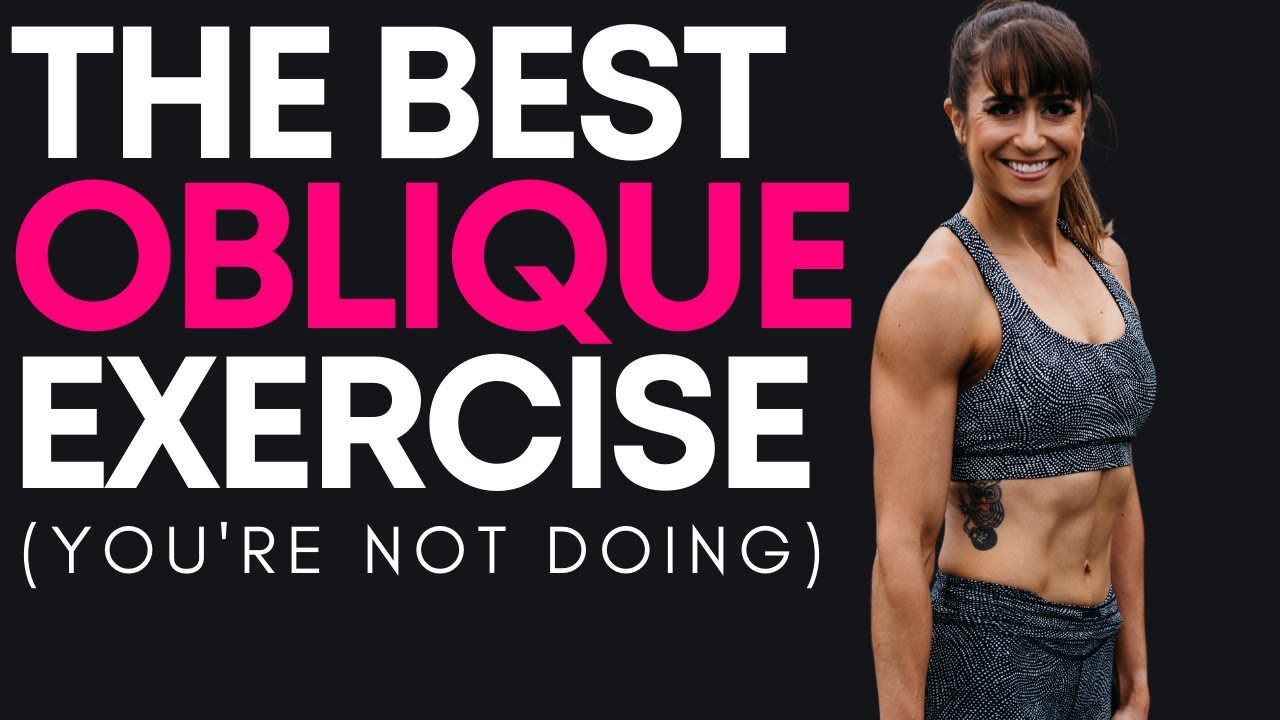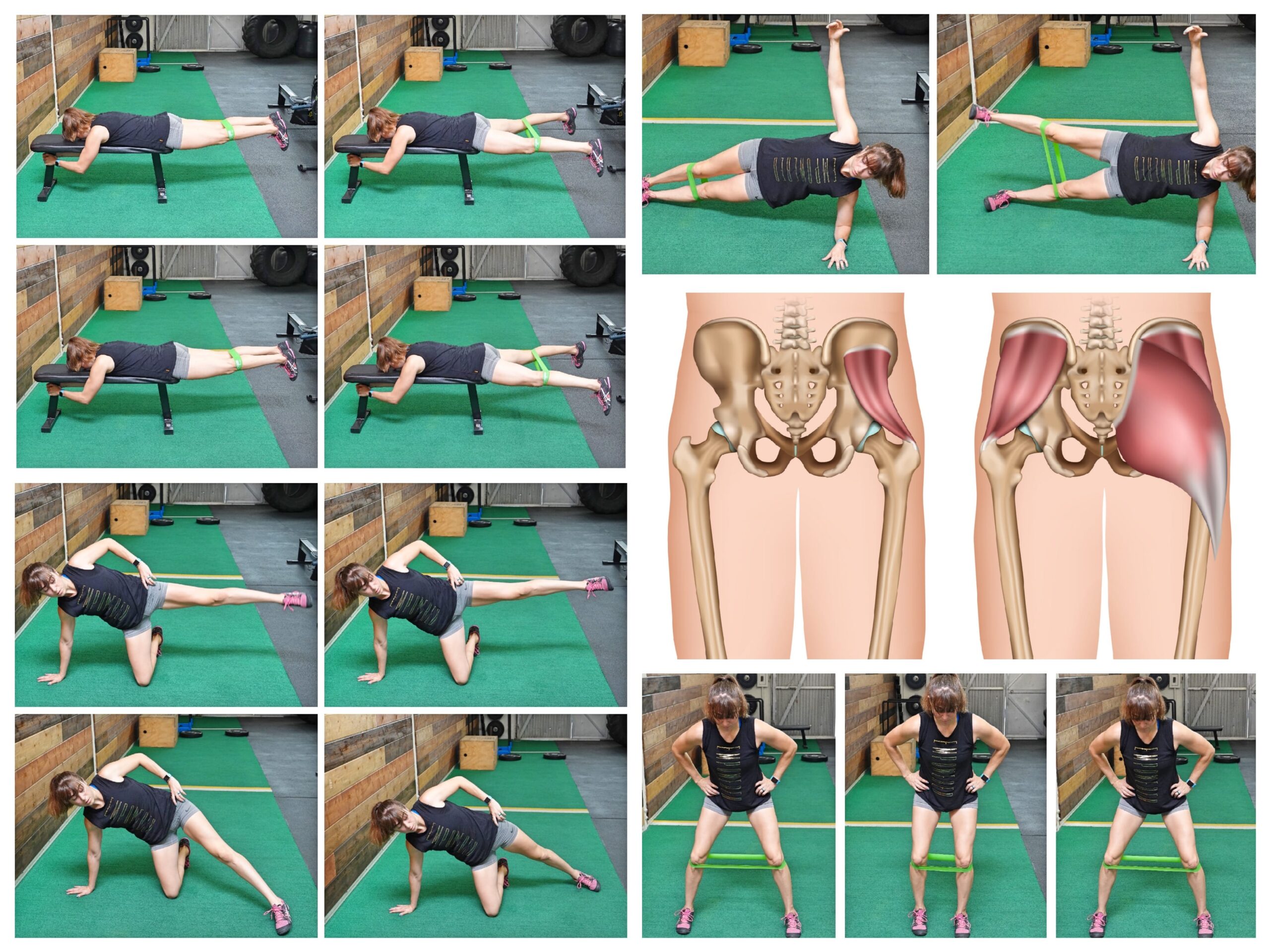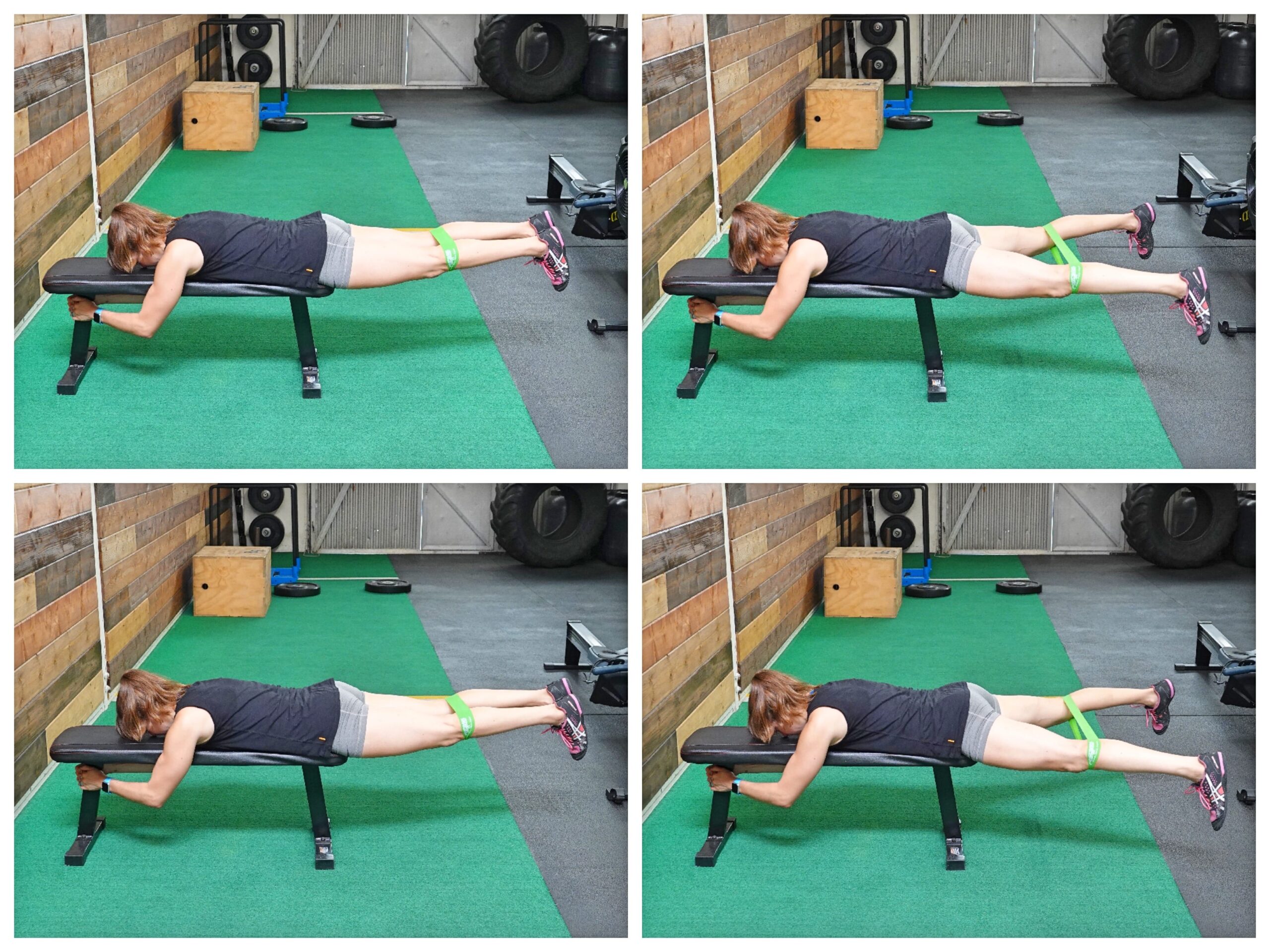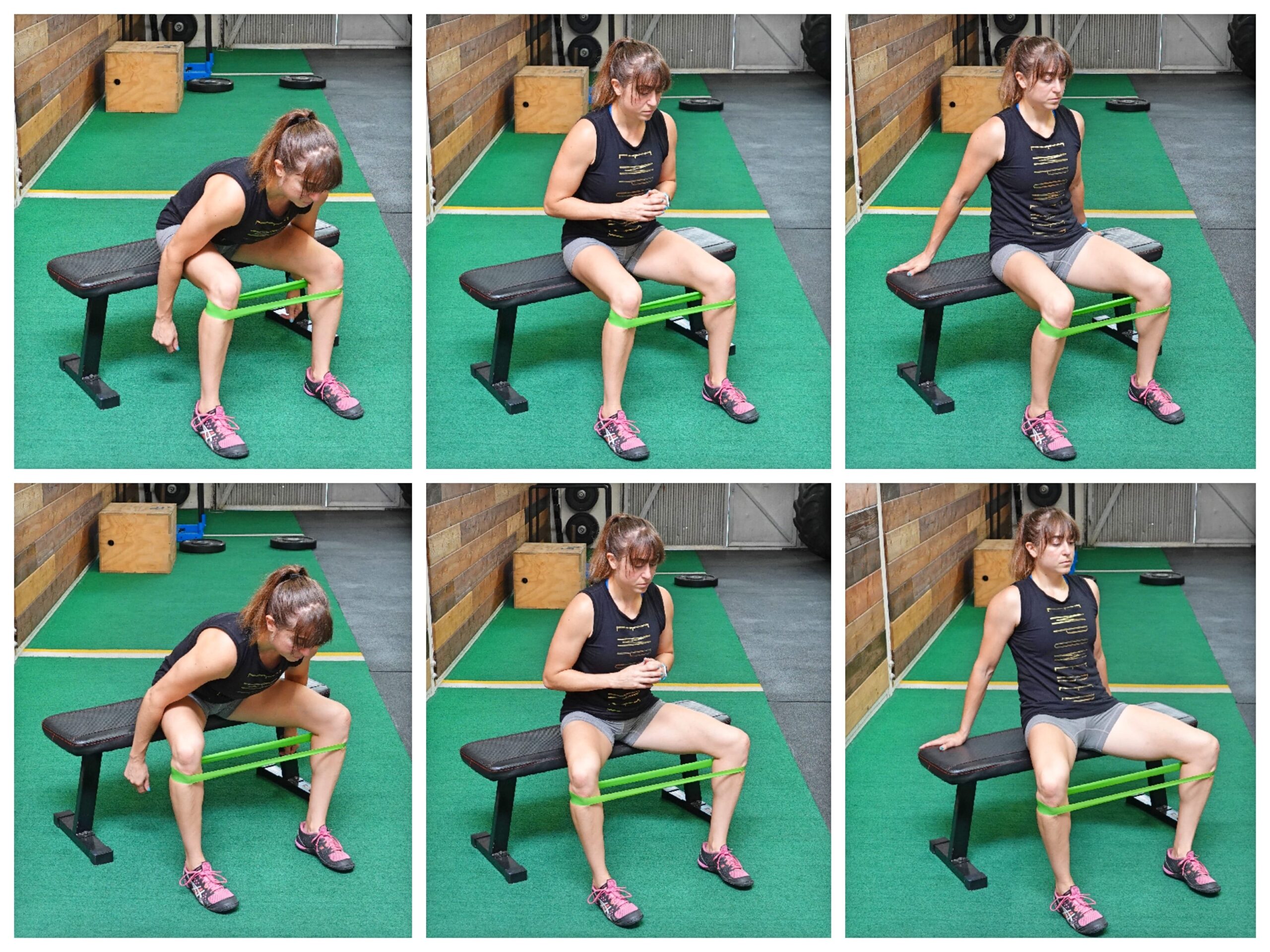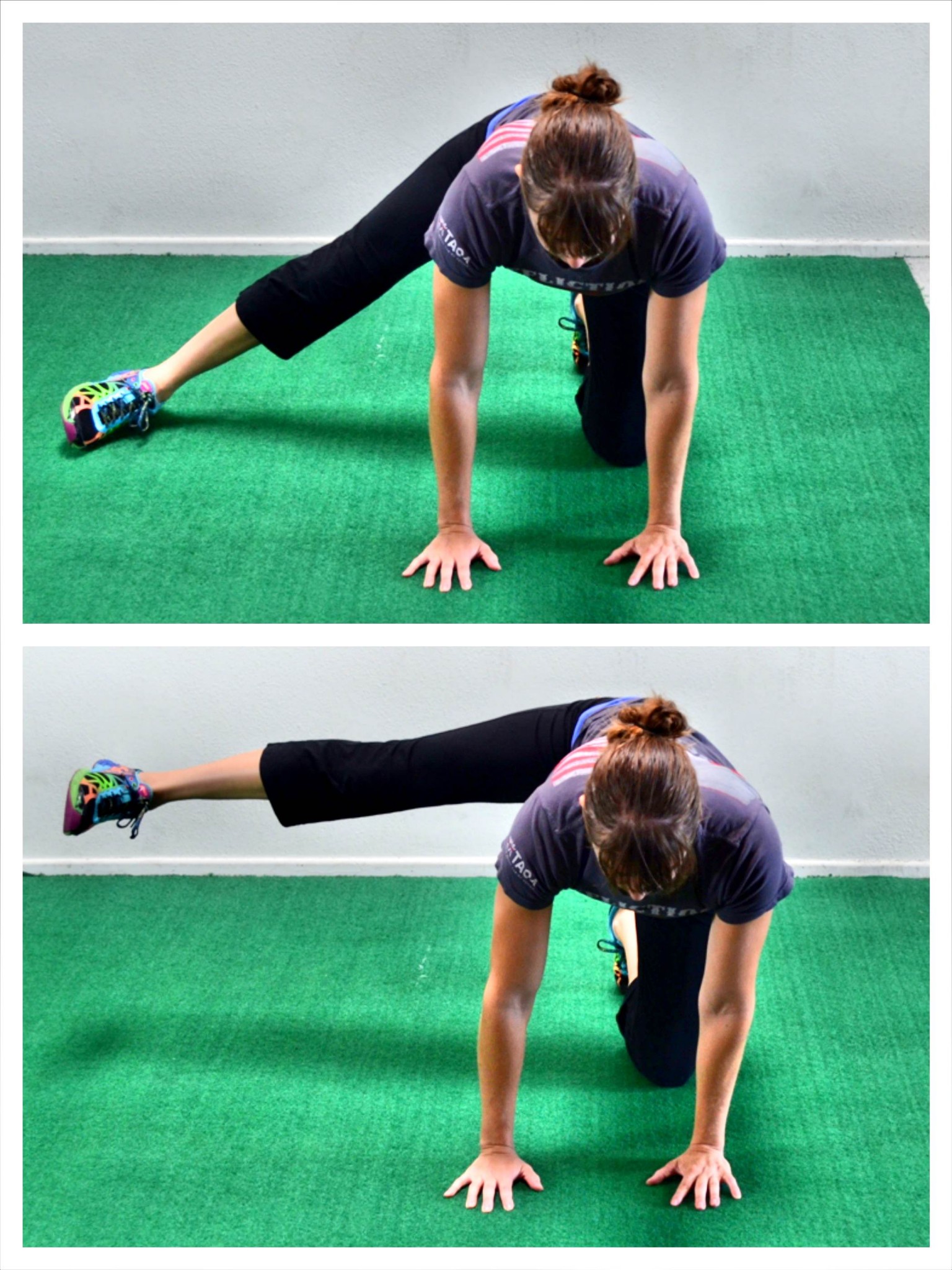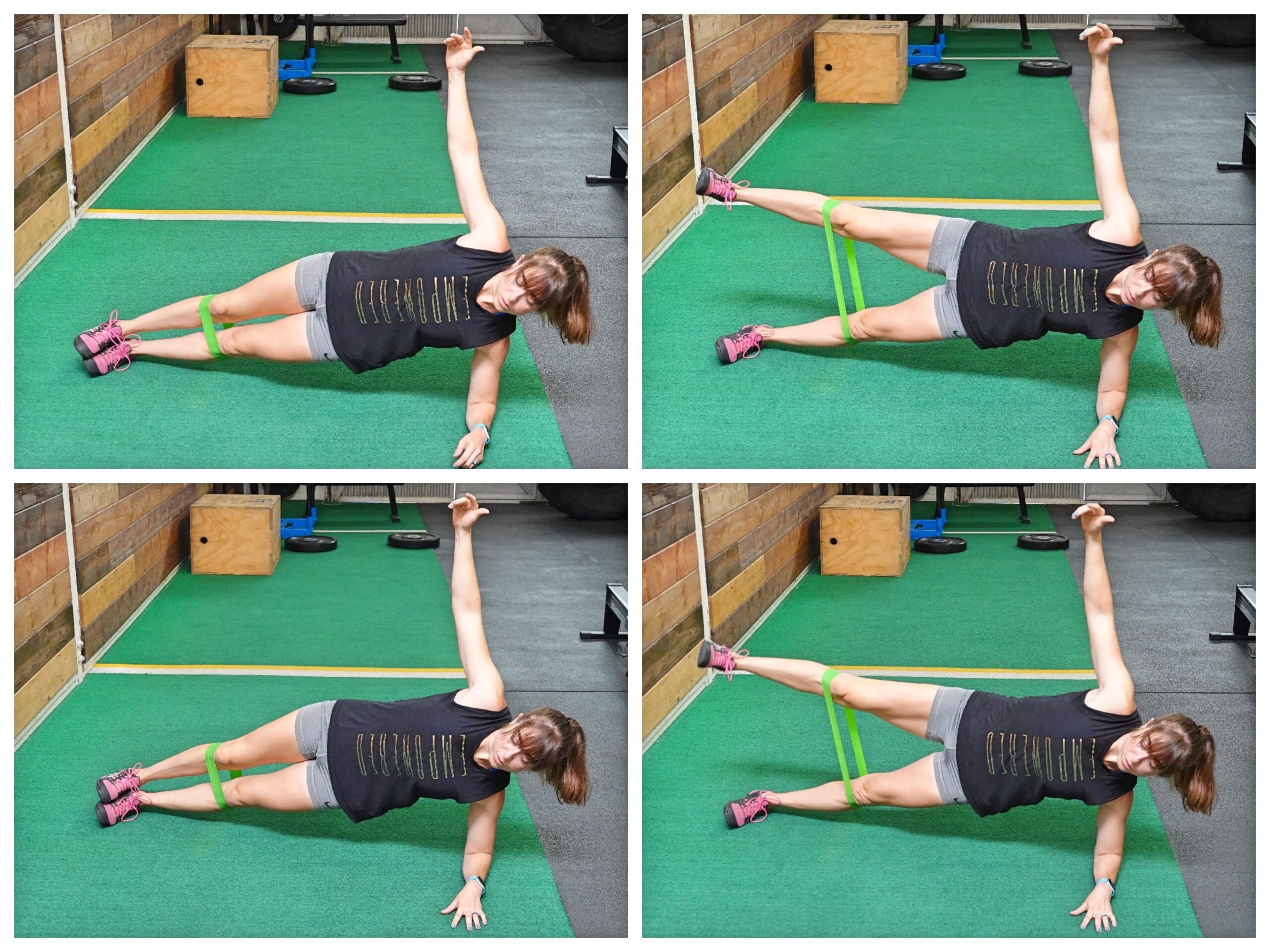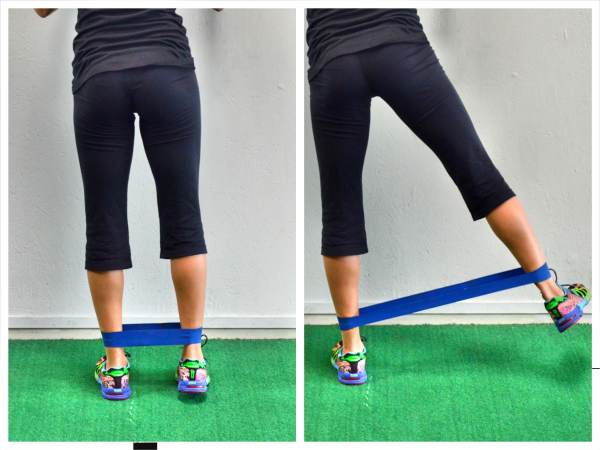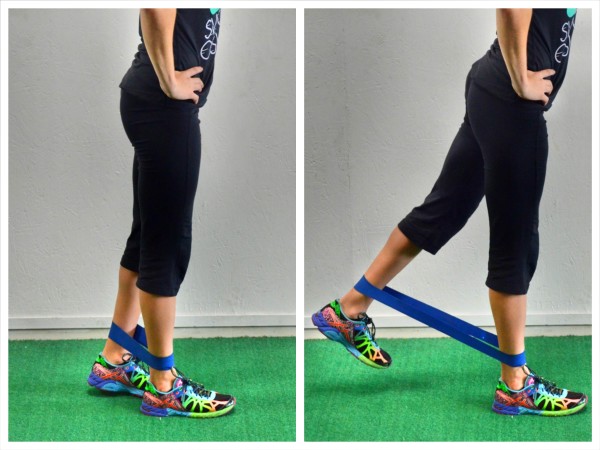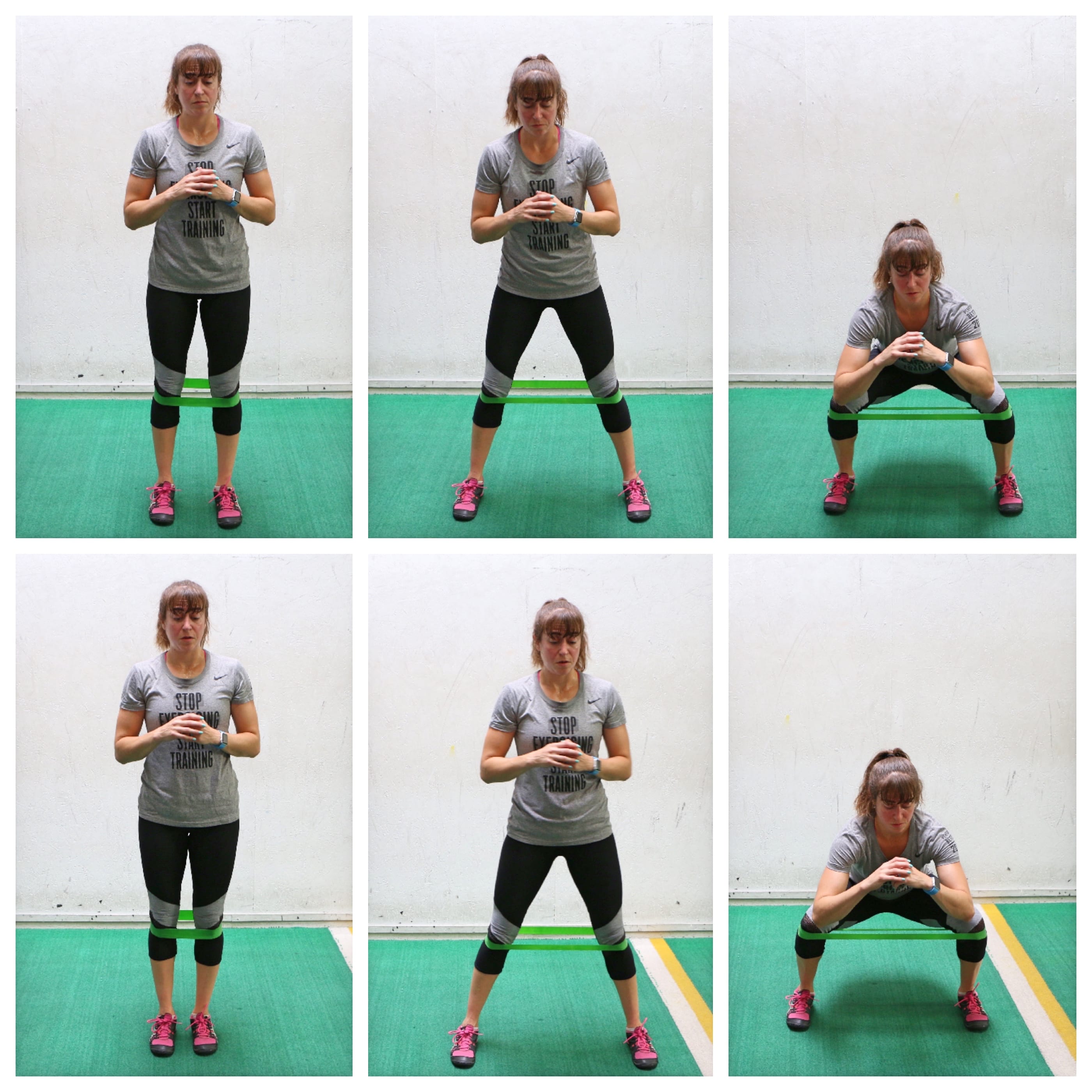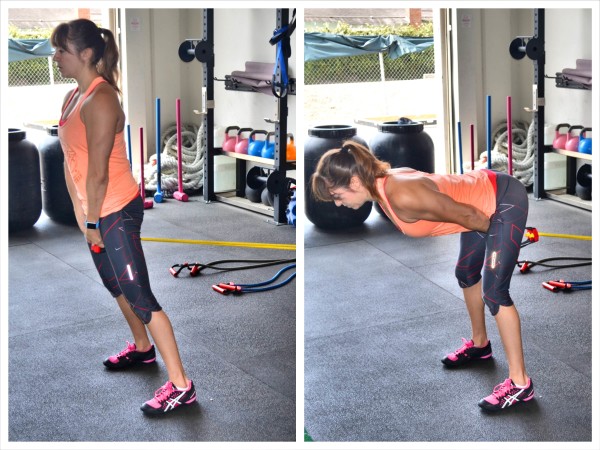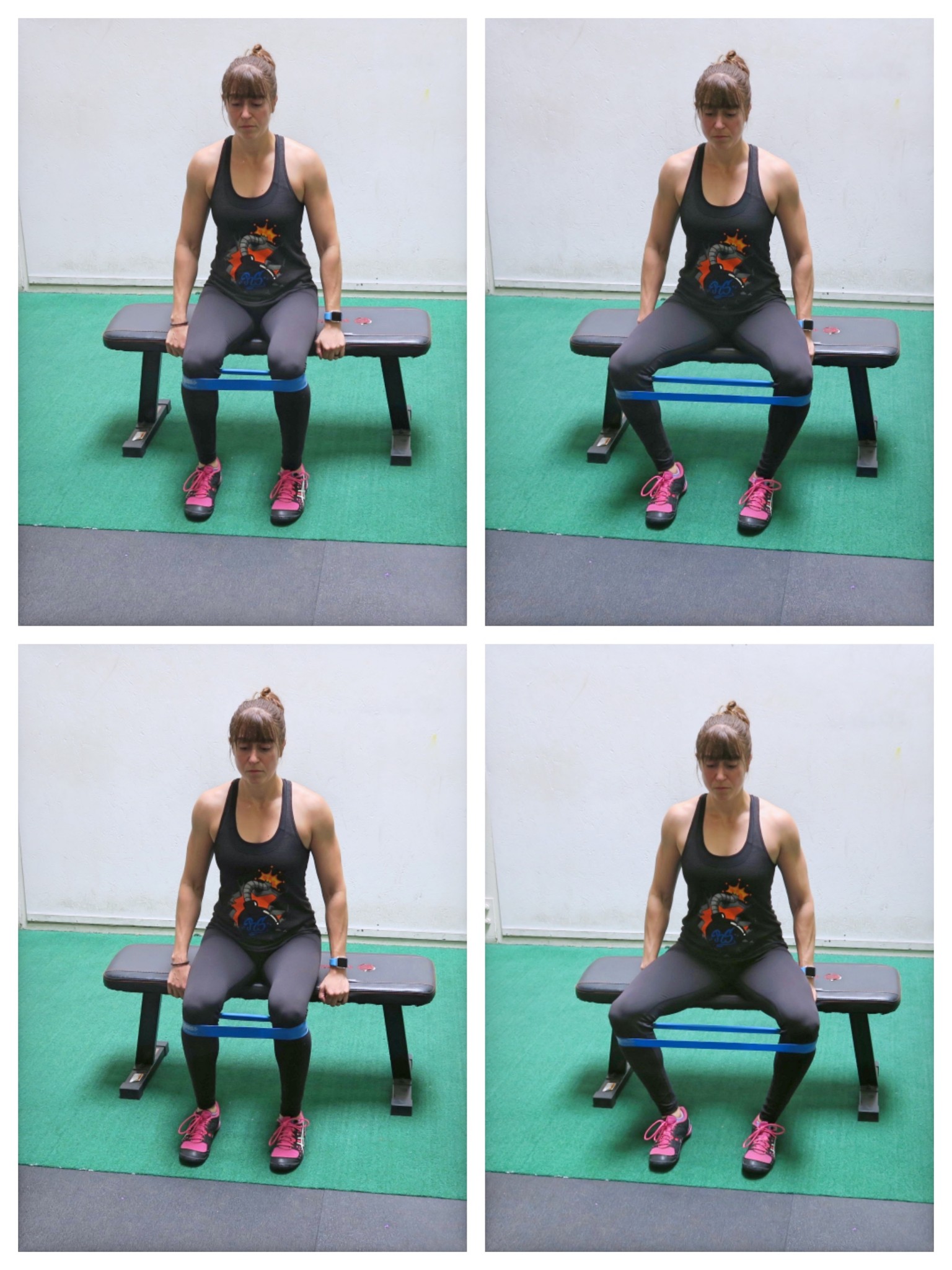
The Weakest Muscle in Your Lower Body (Your Glute Medius)
Stop ignoring this muscle…
The Glute Medius.
The thing is…we THINK we’re doing a ton of exercises to work this muscle and target it at times.
But all too often we’re doing the “right” moves and compensating because of previous injuries and tight hip flexors from sitting for most of the day.
We’re letting our TFL, a hip flexor, or our piriformis, a butt muscle that turns the hip out and open, take over for the glute medius.
And this not only doesn’t help us build stronger glutes, but perpetuates the aches and pains and injuries FURTHER.
So all of that hard work we’re putting in to correct the problem is actually making it worse.
That’s why I want to break down how to actually make sure your glute medius is working and form tweaks to 2 basic glute medius moves I see people doing all of the time and not truly benefiting from.
I’ll also share a few bonus prehab tips to help you get more out of your glute activation exercises in general!
But first, I need to mention the most important part of activating the correct muscles during movements…
Not just going through the motions with exercises!
You need to actually ask yourself as you do the moves, “Where and what do I feel working?”

This mind-body connection is key. And starting out it may be more of a challenge.
You may not feel anything working when you think about it.
The key is learning to notice when other muscles are taking over.
Which is why I want to help you understand how to know your glute medius is truly working…
This starts with understanding where you DON’T want to feel the move.
And you don’t want to feel this move in your TFL, piriformis or down your IT band. Now if you have no idea where these things are, don’t worry, I’m about to break all of this down!
Let’s start with the TFL…
It is key to note that the TFL, or tensor fascia latae if you want to be all fancy, IS an abductor muscle like the glute medius so IS going to work with lateral raise movements too. It helps raise your leg out to the side and stabilize lateral movement.
But too often it is becoming overworked leading to hip, back, IT band and even knee and ankle issues because we aren’t aware it is taking over for the glute medius.
To feel where your TFL is so you can notice when it is working, put your hand on the front top of your pelvis down your leg as you’re lying on your side.
Rotate your toe down toward the ground, turning your leg all the way up toward your hip.
You’ll feel the TFL flex as you do this movement. That’s where you then DON’T want to feel the main part of any lateral raise type movements you do if you want to target your glute medius.
Next the piriformis…
Now this muscle will assist more with external rotation type exercises, so moves where you’re lifting your leg out to the side but also rotating your hip open or turning your toe out.
To notice your piriformis working instead, you will want to lie on your side and put your hand were the top of your back pocket on your pants would be. Then turn your toe open toward the ceiling, externally rotating your hip. You’ll feel that piriformis muscle flex.
Again you don’t want to feel this taking over during those glute medius lateral raise, abduction movements.
And the last area I want to mention is the IT Band as often we can feel tension down the side of our thigh during these movements as we start to progress them.
Part of this is because of the TFL’s connection to our IT Band and that becoming overworked.
But also because we aren’t focusing on the lift coming from our glute.
If you feel tension down the outside of your leg, you will want to then check to feel if your TFL is really flexed during the exercise especially or if you feel your glute medius working.
Now…I want to help you find your glute medius so you can check to feel it working in moves when you can’t yet just feel it activating with that mind-body connection yet.
Then I want to dive into the 2 moves and form tweaks you can make to help you make sure this muscle is powering the movement.
To find your glute medius so you can place your hand on this muscle even during moves to feel it working and build that mind-body connection, set up half kneeling with one leg forward and your knee bent to 90 degrees.
You want your knee right over your ankle.
Take your hand on the same side and place your thumb in your hip crease with your palm resting fat at the outer hip joint.
Your palm is resting on your glute medius.
Keeping your palm there, lie on your side and lift your leg straight up to the side.
You “should” feel it working.
But if you don’t, this is where the tweaks to form with basic moves is key!
Because form with exercises isn’t so binary and just good or bad.
There are tweaks we can make to work with our builds and our recruitment patterns, or how we’ve taught our body to use muscles based on daily movements and injuries.
Since we used the basic lateral raise to find these muscles, I want to start with this move and the adjustments you can make to this exercise to really make sure you feel your glute medius working!
The Basic Lateral Raise:
The lateral raise exercise can be done standing or lying down and you can use a variety of tools, including mini bands to progress it.
But before you advance it, you want to be able to really activate your glute medius with just your own bodyweight.
You have to EARN the addition of resistance, or even a bigger range of motion. And you earn that by being able to engage a muscle with just your own bodyweight.
If you struggle doing the lateral raise with feeling those other areas we went over and not your glute medius, the first change to the move you may want to make is your hip rotation, which often we can see in our TOE ANGLE.
Is your toe and foot pointing straight ahead? Turned open? Or down toward the ground?
If you’re struggling to feel your glute medius, you may find it isn’t turned down toward the ground and that internally rotating your hip and turning your toe down toward the ground actually HELPS.
While having your foot parallel to the ground and toe pointing forward isn’t wrong in the slightest nor is turning your toe open, often those make it harder for us to avoid compensating to start.
If you turn your toe down and still don’t feel your glute, notice your body alignment.
Are your hips slightly flexed? Is your torso slightly forward or legs slightly in front creating a slight bend in your hips?
If so, straighten out and squeeze your glutes to drive your hips into extension. Do not arch your back. Just extend your hips with your glutes.
This engagement of your glute max can help.
You can also then slightly kick back as you raise your leg out to the side.
This also focuses the move more on your glutes to help prevent the TFL, which flexes the hips, from engaging.
Kicking back into a wall even and holding that pressure as you raise can even help further if the basic kickback isn’t enough.
Just to recap the tweaks…
Turn the toe down toward the ground, rotating your hip toward the ground. Keep this position during the move. If you’re standing, you’re turning your toe in toward your other leg.
Make sure your lying in a straight line with your glutes engaged.
Kick back slightly as you lift even pushing into a wall through the entire move.
The next move I wanted to cover is The Clamshell.
This is a move that anyone with back pain, hip pain, knee pain, ankle pain has probably been given in physical therapy.
And it is an amazing move, when done correctly.
But so often this move isn’t done while targeting the glute medius and we don’t even realize it.
With the clam, we tend to focus on range of motion and making it a bigger movement, which really is just more external rotation of the hip and often leads to us feeling the piriformis more.
To stop us focusing so much on the range of motion, place a yoga blocks between your feet. This helps you really focus on lifting from your glutes and makes the move very small.
Sometimes shrinking the range of motion on an exercise to start can help.
Because, while we do want to strengthen muscles through a full range of motion, we first need to isolate to activate at times.
So using the yoga block you can focus on just that small movement to lift the knee open.
This also helps you avoid any toe rotation and therefore extra hip rotation. This keeps your feet locked in parallel.
But if you don’t have a block, just like with the lateral raise, even turning your toe down over your bottom foot can help you focus on that glute medius and restrict the range of motion of the clam too!
You can also put your back against a wall to help you avoid rotating open or swinging your leg if you don’t have a yoga block while almost seeing the exercise as you working to STOP the lift open.
And just like the lateral raise, we also want to pay attention to the amount of hip flexion we have during the exercise or how much our hips are bent.
The more out in front of you your knees are, the more your hips will be bent, which can make it harder to feel your glute medius and easier for your TFL to compensate.
And while you may adjust the degree of hip flexion to target different aspects of the glute medius eventually, to start you want to find the positioning that allows you to make sure your glute is working.
Keeping your hips more extended can help and the wall behind you can be a guide to set up.
To recap these tweaks quickly…
Use a yoga block or wall to help you avoid making the exercise movement bigger than it needs to be and focus on that glute lifting.
Adjust how bent your hips are to even extend your hips more and engage your glutes better.
Turn your top toe down over your bottom foot to help limit the range of motion and focus on that glute even stopping the lifting through engaging.
Then as you feel your glute medius working in both of these moves, you can add resistance.
A mini band placed often on the thighs is a great way to start.
Placing a light resistance closer to our hips helps us really focus on still feeling our glute medius working as we create more of a challenge for the muscle to strengthen it!
Now if you’re still struggling with feeling everything but your glute medius working right from the start, you should NOT add resistance.
And you want to make sure you’re doing that full prehab process, including foam rolling and stretching prior to these activation moves.
Foam roll your TFL and your piriformis to help relax and release those muscles.
Stretch your hip flexors to allow your glutes to engage better.
THEN do these activation moves.
And don’t be afraid to pause in your activation to use those foam rolling moves especially if you do feel something compensating.
But don’t just keep pushing through!
Because what you feel working is getting all of the benefit of the exercise. Make sure the muscles you want are truly being worked!
If you want to improve your hip stability, avoid knee, hip and lower back aches and pains, lift more, run faster and cycle further, stop ignoring the importance of making sure your glute medius is actually benefiting from all the exercises you are doing!
Want more amazing workout and nutrition tips? Subscribe to my YouTube:


